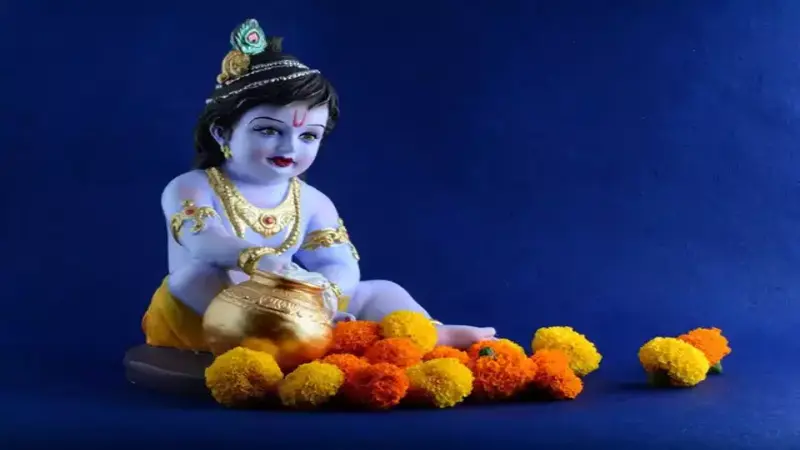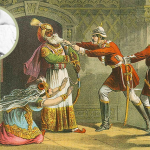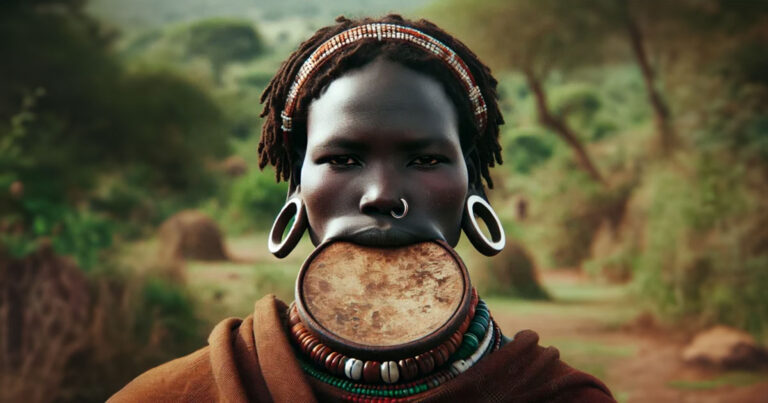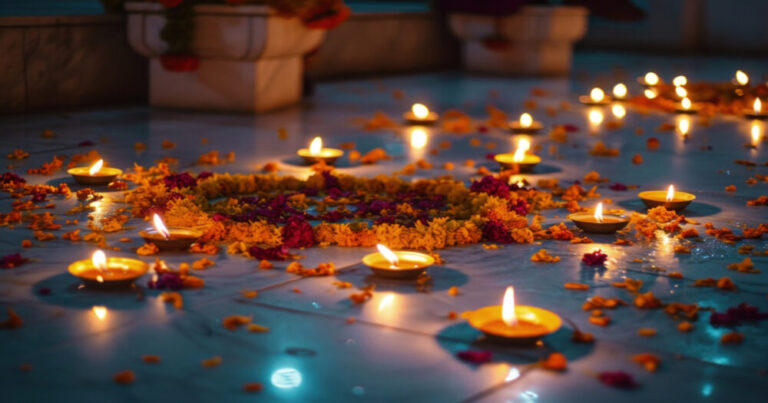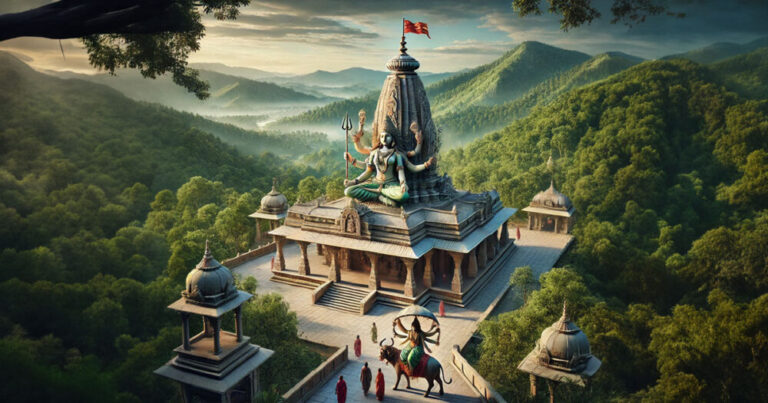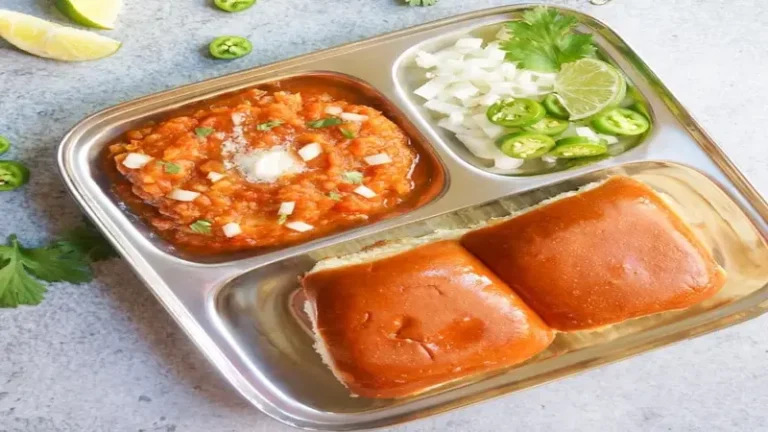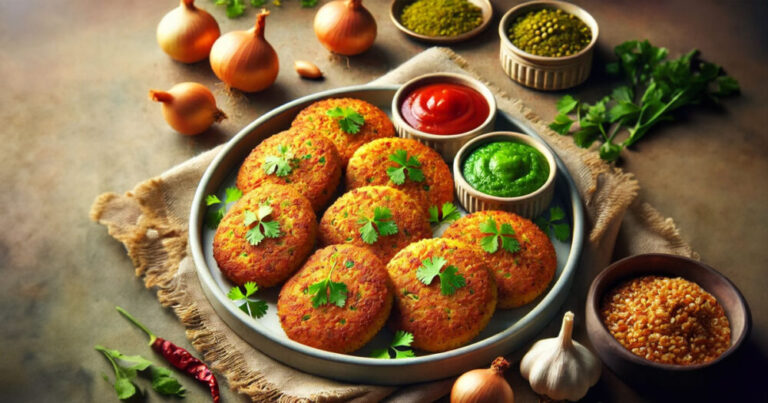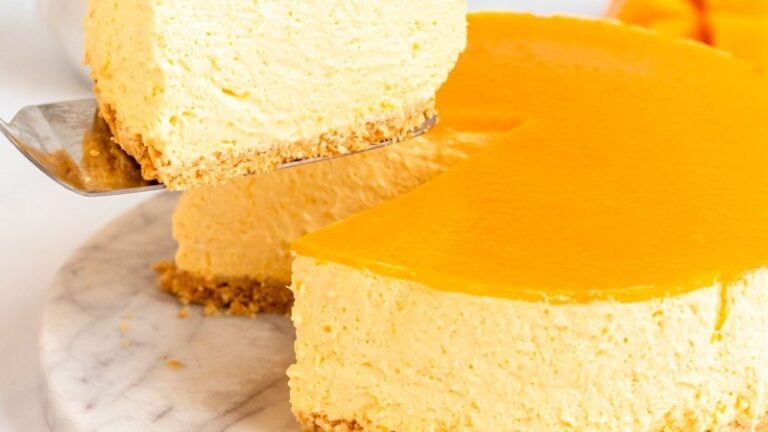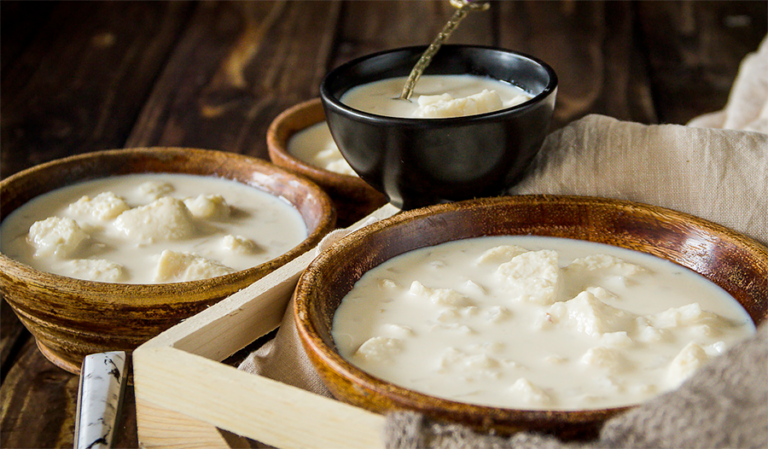India, a land known for its diverse culture, traditions, and festivals, boasts a rich tapestry of celebrations that reflect its deep-rooted spiritual and religious heritage. Among the myriad of festivals that grace the Indian calendar, Janmashtami stands out as a prominent celebration that reveres the birth of Lord Krishna, a divine incarnation and a pivotal figure in Hindu mythology. Janmashtami, often referred to as Krishna Janmashtami or Gokulashtami, is a grand occasion celebrated with immense fervor and devotion by millions of Hindus across the world. This essay explores the significance, rituals, and cultural aspects of Janmashtami, shedding light on its historical and spiritual essence. The auspicious festival of Krishna Janmashtami is being observed by the Hindu community worldwide to commemorate the birth of Lord Krishna. The ceremonies for Janmashtami will begin on September 7.
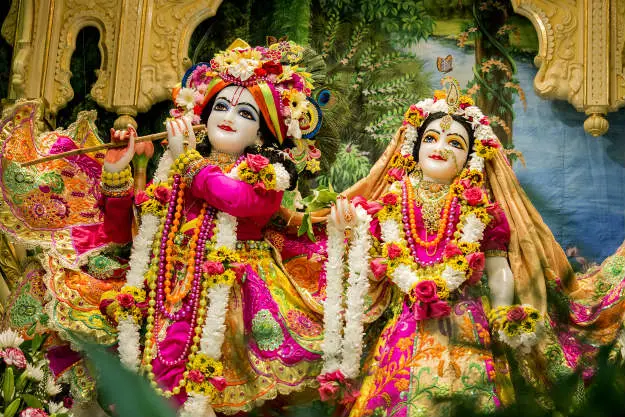
Historical Background
To understand Janmashtami, it is essential to delve into the historical context surrounding Lord Krishna. According to Hindu beliefs, Lord Krishna is considered the eighth incarnation (avatar) of Lord Vishnu, the preserver of the universe. His life and teachings are chronicled in the revered Hindu scripture, the Bhagavad Gita, which is part of the epic Mahabharata.
Lord Krishna was born in the city of Mathura, a place situated in present-day Uttar Pradesh, India. His birth took place on the eighth day of the dark fortnight in the Hindu month of Bhadrapada, which corresponds to August or September in the Gregorian calendar. This auspicious day is celebrated as Janmashtami. The story of Krishna’s birth is a captivating tale of divine intervention and profound significance.
According to Hindu mythology, Krishna’s birth was foretold as a means to vanquish evil and restore dharma (righteousness) to the world. His parents, Vasudeva and Devaki, were imprisoned by Devaki’s brother, the tyrannical King Kamsa, who feared a prophecy that predicted his death at the hands of Devaki’s eighth son. Despite numerous challenges and obstacles, Krishna’s birth occurred in a prison cell, and he was miraculously transported to the village of Gokul, where he was raised by his foster parents, Nanda and Yashoda.
Significance of Janmashtami
Janmashtami carries profound spiritual and cultural significance for Hindus. It is a celebration of the divine birth of Lord Krishna, who is regarded as the epitome of divine love, wisdom, and virtue. The festival symbolizes the victory of good over evil, the triumph of righteousness over unrighteousness, and the importance of dharma in one’s life.
Celebrating Divine Love: Janmashtami underscores the profound love between Lord Krishna and his devotees, particularly his childhood sweetheart, Radha. Their love is celebrated through dance dramas, devotional songs, and reenactments of Krishna’s childhood antics, symbolizing the deep connection between the divine and the human soul.
Spiritual Enlightenment: Lord Krishna’s teachings in the Bhagavad Gita serve as a source of spiritual guidance for many. On Janmashtami, devotees reflect on his profound discourse, emphasizing the importance of duty, righteousness, and devotion to attain spiritual enlightenment.
Festive Joy: Janmashtami is a time of joy, merriment, and celebration. Temples and homes are adorned with colorful decorations, and the air is filled with devotional songs and chants. Devotees fast, engage in prayer, and participate in various cultural activities, creating an atmosphere of jubilation.
Cultural Unity: Janmashtami transcends regional and cultural boundaries, bringing people of different backgrounds together to celebrate a common heritage. It fosters a sense of unity and cultural identity among Hindus worldwide.
Renewal of Faith: For many, Janmashtami is a time to renew their faith and commitment to their spiritual path. It serves as a reminder of the eternal values of love, compassion, and righteousness that Lord Krishna embodied.
Rituals and Celebrations of Janamashtami
The celebration of Janmashtami varies across regions and communities, but there are several common rituals and traditions associated with the festival:
Fasting
Devotees often observe a fast on Janmashtami, abstaining from food and water until midnight, the time when Lord Krishna is believed to have been born. The fast is broken with a special meal that includes a variety of dishes, such as sweets and fruits.
Decorating Homes and Temples
Homes and temples are decorated with flowers, colorful rangoli designs, and intricate patterns to create a festive atmosphere. Images or idols of baby Krishna are adorned with new clothes and jewelry.
Midnight Celebrations
The birth of Lord Krishna is believed to have occurred at midnight. Devotees gather in temples to sing bhajans (devotional songs), recite prayers, and perform arati (a ritual involving the waving of lamps) at this auspicious hour.
Dahi Handi
In the state of Maharashtra, a popular tradition known as “Dahi Handi” is observed. Young men form human pyramids to reach and break a pot filled with curd or buttermilk, symbolizing Krishna’s love for dairy products.
Rasa Lila
In some regions, a reenactment of the “Rasa Lila” is performed. This dance-drama depicts the youthful Lord Krishna dancing with the gopis (milkmaids) in the moonlight, symbolizing the divine love and unity between the soul and the Divine.
Devotional Music and Dance
Classical and folk dances, such as the Manipuri Raas Leela and the Gujarati Dandiya Raas, are performed in devotion to Lord Krishna. Devotional songs (bhajans) praising Lord Krishna’s leelas (divine activities) are sung with great enthusiasm.
Offerings and Prayers
Devotees offer a variety of sweets, fruits, and other special dishes to Lord Krishna. They also light incense, offer flowers, and recite prayers seeking his blessings.
Swinging Baby Krishna
In some homes and temples, a small idol of baby Krishna is placed in a cradle and gently rocked, symbolizing the joyous birth of the Divine Child.
Reading Scriptures
Devotees often read or listen to passages from the Bhagavad Gita or other sacred texts associated with Lord Krishna’s life and teachings.
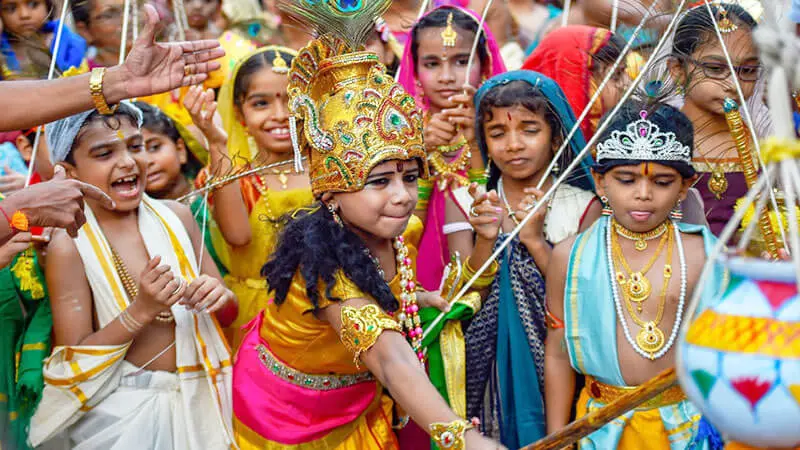
Regional Variations
While the essence of Janmashtami remains the same, the festival exhibits regional variations in its celebration:
- Mathura and Vrindavan: These cities, closely associated with Lord Krishna’s life, host grand celebrations. The temples in these regions are elaborately decorated, and processions featuring idols of Lord Krishna are taken out in the streets.
- Maharashtra: Dahi Handi, as mentioned earlier, is a prominent tradition in Maharashtra. Enthusiastic groups of young men form human pyramids to break pots of curd or buttermilk, competing for prizes.
- Gujarat: In Gujarat, the festival is marked by vibrant and energetic performances of the Dandiya Raas, a traditional dance with sticks. It is a lively and colorful expression of devotion to Lord Krishna.
- Bengal: In West Bengal, Janmashtami coincides with the larger Durga Puja festival. Devotees create elaborate idols of Lord Krishna and Radha and offer them prayers and bhog (food offerings).
- South India: In the southern states, Janmashtami is celebrated with devotion, featuring special pujas, processions, and cultural performances. Temples dedicated to Lord Krishna come alive with decorations and rituals.
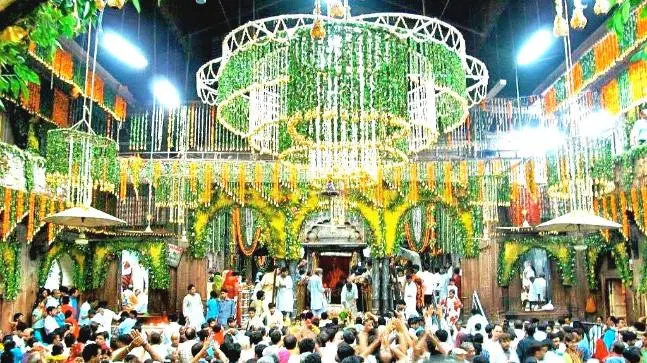
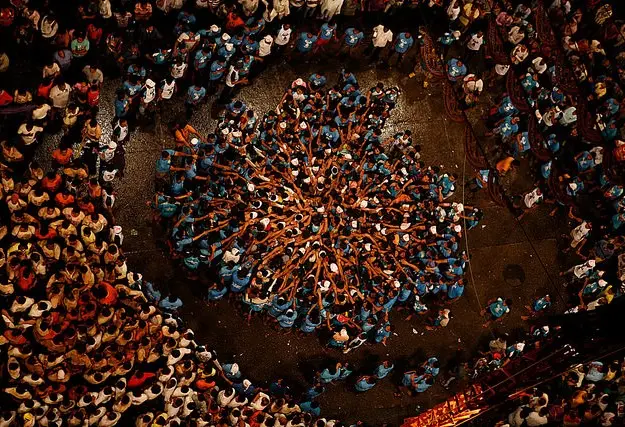
The Bhagavad Gita and Janmashtami
The Bhagavad Gita, often referred to as the Gita, is a 700-verse Hindu scripture that is a part of the Indian epic Mahabharata. It is a conversation between Prince Arjuna and Lord Krishna, who serves as his charioteer. The Gita addresses profound philosophical and ethical questions and is considered one of the most important texts in Hindu philosophy.
Janmashtami holds a special connection with the Bhagavad Gita as it marks the birth of Lord Krishna, the divine speaker of this scripture. The Gita is a guide to leading a life of righteousness, duty, and spirituality, and it offers insights into various aspects of human existence. On Janmashtami, devotees often read or listen to the verses of the Bhagavad Gita, seeking inspiration and guidance from Lord Krishna’s teachings.
One of the key themes of the Bhagavad Gita is the concept of dharma, which refers to one’s duty or righteousness. Lord Krishna emphasizes the importance of performing one’s duties without attachment to the results, a principle known as “Nishkama Karma.” This teaching is particularly relevant to Janmashtami as it encourages individuals to act selflessly and perform their duties with devotion, mirroring the selfless love and actions of Lord Krishna.
Janmashtami and Modern Celebrations
In contemporary times, Janmashtami continues to be celebrated with great enthusiasm and fervor. While the core rituals and traditions remain intact, there have been some adaptations to suit the modern lifestyle. Here are a few ways in which Janmashtami is celebrated in the present day:
- Digital Celebrations: With the advent of technology and social media, Janmashtami celebrations have expanded to the digital realm. Temples and organizations live-stream bhajans, kirtans, and discourses, allowing devotees from around the world to participate virtually.
- Cultural Performances: Janmashtami cultural performances, such as dance dramas and music concerts, are often organized in auditoriums and theaters, attracting a diverse audience. These events help convey the spiritual message of the festival to a broader audience.
- Interfaith Understanding: Janmashtami celebrations also provide an opportunity for interfaith dialogue and understanding. Many non-Hindus participate in the festivities to learn about and appreciate the rich cultural and spiritual heritage of India.
- Community Service: Some devotees use Janmashtami as an occasion for acts of charity and community service, reflecting Lord Krishna’s teachings of compassion and selflessness.
- Eco-friendly Celebrations: In recent years, there has been a growing awareness of the environmental impact of festivals. Efforts are made to celebrate Janmashtami in an eco-friendly manner by using natural materials for decorations and reducing waste.
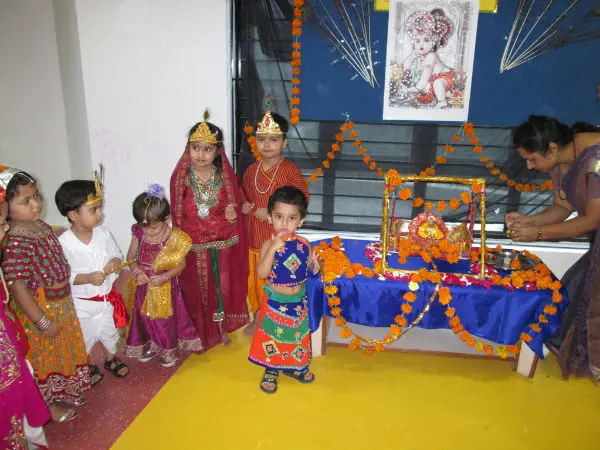
Janmashtami, the celebration of Lord Krishna’s birth, stands as a testament to the enduring devotion and spirituality of the Hindu culture. It is a festival that transcends time and boundaries, uniting millions of people in their reverence for Lord Krishna and his divine teachings. The festival not only serves as a source of spiritual inspiration but also fosters a sense of unity, cultural identity, and joyous celebration within the Hindu community and beyond.
Through rituals, prayers, and cultural expressions, Janmashtami reminds us of the eternal values of love, compassion, and righteousness. It encourages individuals to lead lives guided by these principles, just as Lord Krishna did during his earthly incarnation. As Janmashtami continues to evolve and adapt to the modern world, its essence remains unchanged: a celebration of the eternal divinity that resides within us all, symbolized by the playful, mischievous, and divine Lord Krishna.

